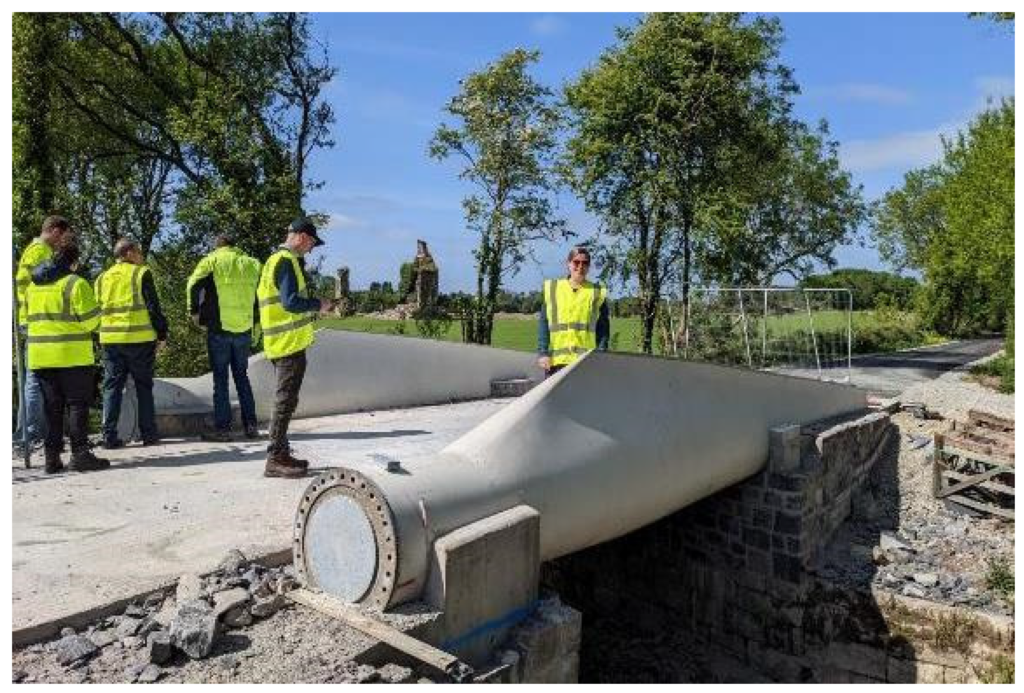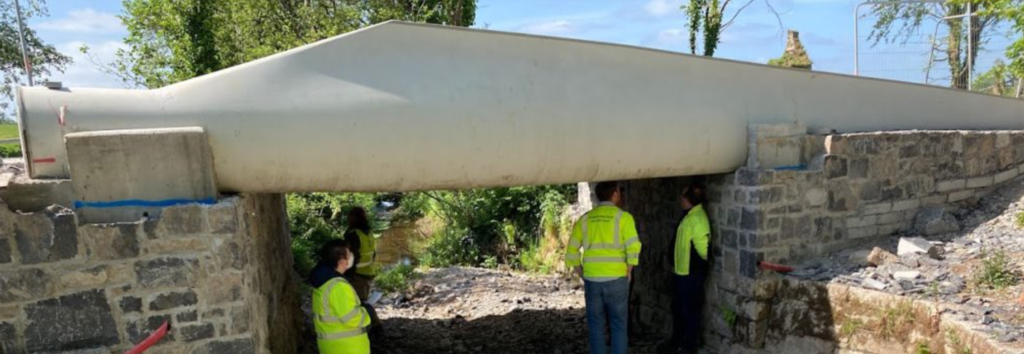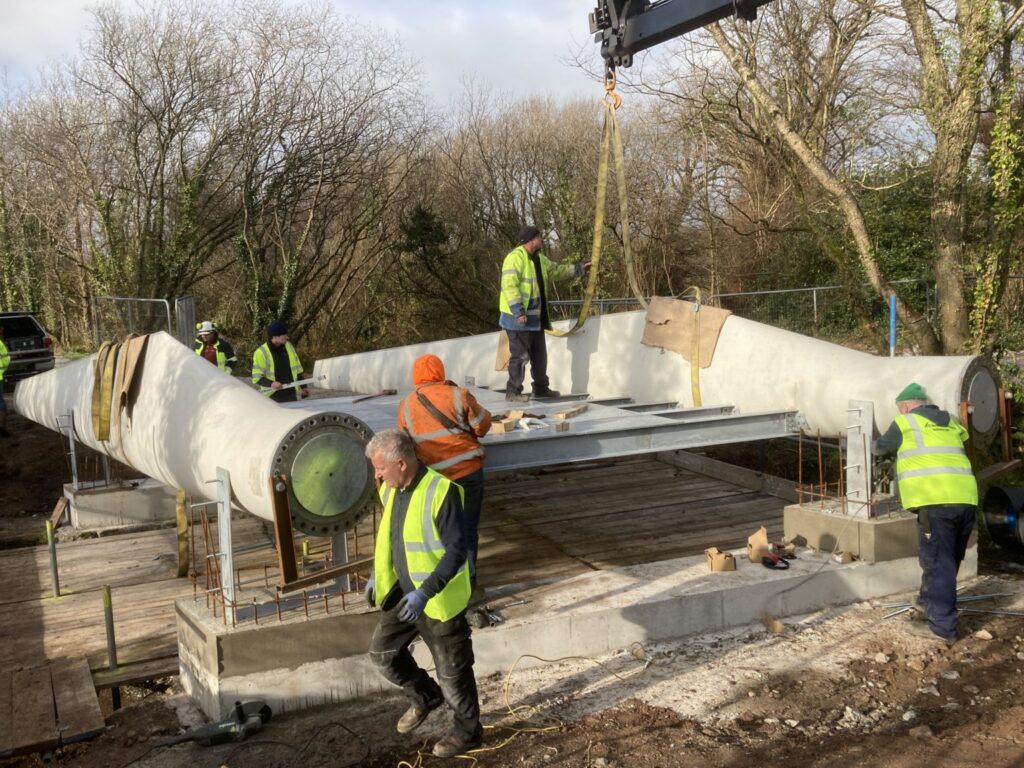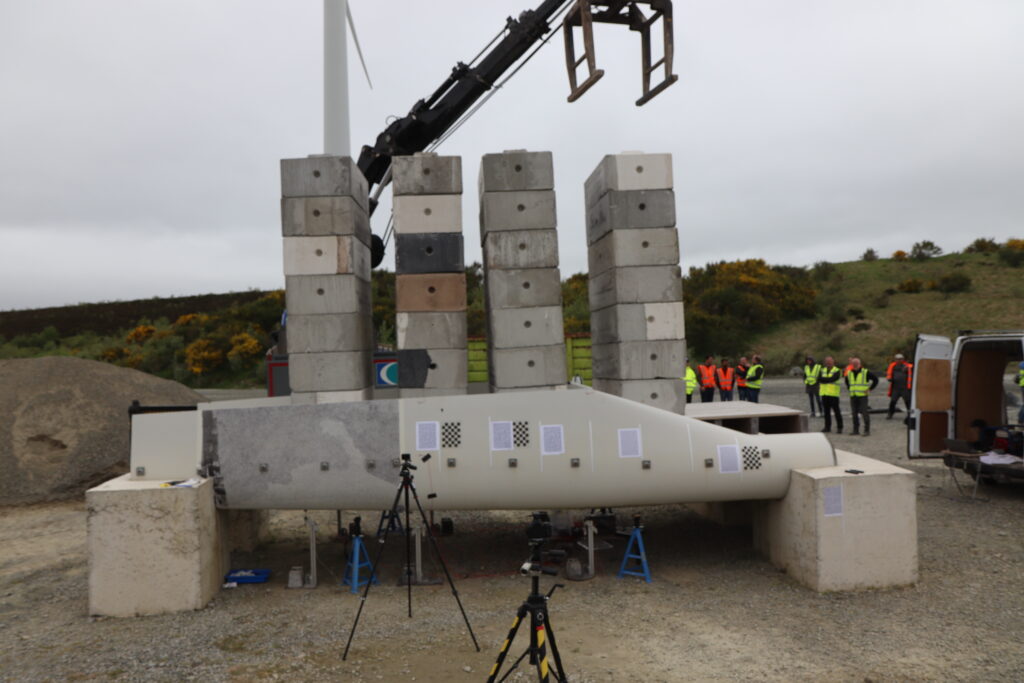From Superinnovators 26/10/23. This article is in TLDR (Too Long Didn’t Read) format which is popular in the innovation community and provides a bullet summary of information.
- Introduction: BladeBridge, based in Cork, Ireland, is an innovative startup spun out of the Re-Wind Network, focusing on repurposing decommissioned wind turbine blades into structural elements for footbridges.
- The challenge: Wind turbine blades, primarily made of non-biodegradable glass fibre reinforced polymer (GFRP) composite materials, have a service life of 20 to 25 years. University of Cambridge researchers estimate a cumulative total of 43 million tonnes of waste blades will be generated worldwide by 2050. With the scaling up of wind farm development, the disposal of these blades at the end of their lifespan poses a significant environmental challenge.
- The Re-Wind Network: A transatlantic collaboration comprising universities and research institutes from Ireland, Northern Ireland, and the US, the Re-Wind Network explores various ways to recycle and repurpose these blades. Potential applications include bus shelters, street furniture, and telecommunications towers.
- BladeBridges: Two footbridges, known as BladeBridges, have been successfully constructed in Draperstown and Midleton, Cork using these repurposed blades. The Draperstown bridge is 5.8m long, and the Cork bridge is 5m long. The bridges are supported by long horizontal girders made from the blades, making them suitable for spanning open gaps.
- Bridge design: Both bridges were built using identical 13.4m long turbine blades as lateral girders on either side of a central deck. The Cork bridge was designed for pedestrian loading and potential vehicle impact, while the Draperstown bridge featured a timber deck. The design also considered the structural integrity of the blades, ensuring that bolts did not tear the GFRP fibers.
- Cost and construction: The construction of these bridges is relatively cost-effective, with the Draperstown bridge costing £10,808, excluding design and testing. The blades are often donated, further reducing costs.
- Environmental impact: Repurposing these blades into bridges offers potential carbon savings. For instance, the Cork BladeBridge has 20% less embodied carbon than a conventional bridge.




More info
https://www.independent.co.uk/tech/wind-turbine-blade-recycle-bridge-b2418645.html



